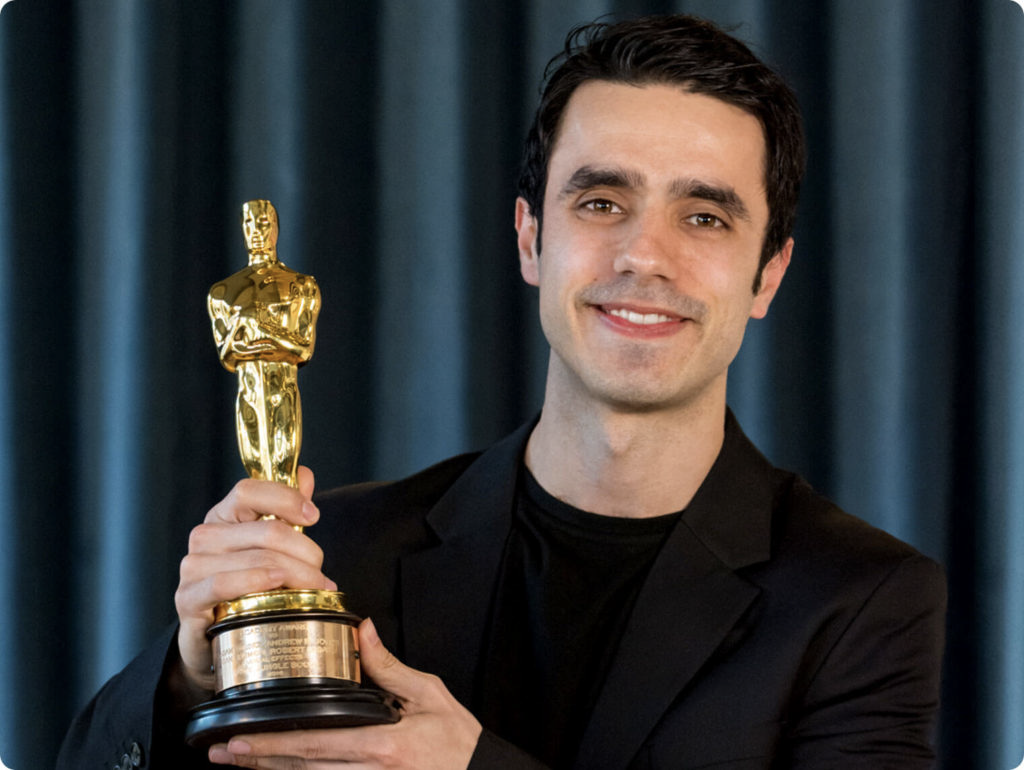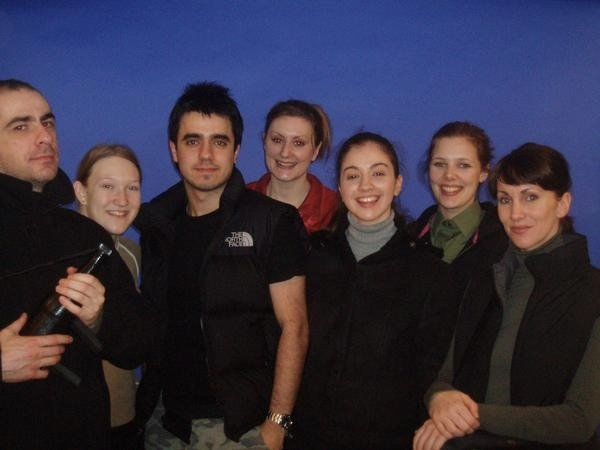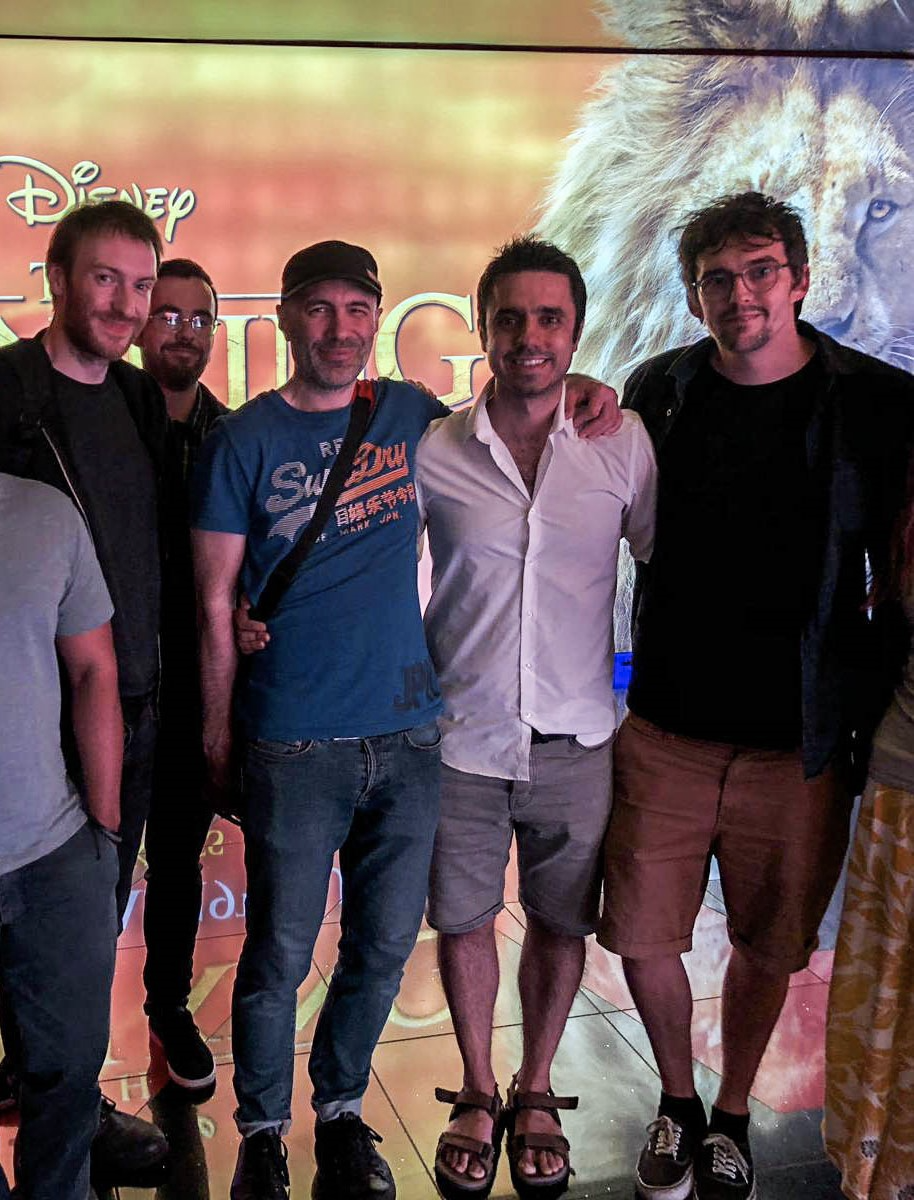In conversation with Pedram Etebar
“When reviewing my team's work I’m looking out for the following, ‘are we hitting the storytelling moments of the shot, is it believable and check your eye-lines!’ All of that came from Redroofs”.
 Pedram with the Oscar he won with the Visual Effects (VFX) team on The Jungle Book.
Pedram with the Oscar he won with the Visual Effects (VFX) team on The Jungle Book.
Quick disclaimer, in this conversation he would like to make clear that this is a personal conversation and he’s speaking on his own behalf. The views stated here are his, and do not necessarily represent the views of The Moving Picture Company.
Pedram Etebar is an Oscar-winning Lead Crowd Technical Director (TD) for Feature Films. Over the last seven years he has worked with the world renowned The Moving Picture Company (MPC). His credits as a lead include titles such as The Lion King, Alien Covenant, Fantastic Beasts and Where to Find Them, Godzilla vs. Kong and Maleficent: Mistress of Evil.
MPC is a facility in Soho, he explains, ‘I work at the post-production stage of the film pipeline which comes after the on-set shoot. My role is within the Crowd department where we create anything from stampeding wildebeests, flocking systems, epic battle sequences, set-extensions and hero-esque character animation. As a lead the job is a mixture between creative, technical and managerial with team sizes ranging between 6 -13 depending on the stage of production’.
Crowd is an interesting technical discipline, it’s an abstraction on top of a few other departments. We work closely with Assets, Rigging, Animation and FX. There are two main areas of crowd work, the overall ‘form / shape’ and the individual ‘agents’. In my opinion, what makes a good Crowd TD is having strong technical skills and also a foundation in character performance. For example, you need to beware of shot composition, performance choices and I'm still looking at people's shots and saying, “you’re not hitting the eye-lines for your characters”, all of that came from Redroofs.
 Pedram with classmates on the Redroofs Postgraduate Screen Acting Course
Pedram with classmates on the Redroofs Postgraduate Screen Acting Course
Pedram fondly remembers working with Videographer and Redroofs teacher Phil Eastabrook, highlighting a specific memory from his time at the school. 'I was very impressed by Phil. He would shoot the actors during the day, and start editing in the afternoon. Working with a Videographer really gave me an appreciation for the technical side of filmmaking and he instilled an on-set professionalism into his students. One day, I brought my laptop into the studio, where I mocked up a CG environment. Phil then used a piece of software to live-key the actors, in front of a bluescreen. Both inputs were then previewed real-time on a seperate monitor. We were jamming, he would select camera angles in the CG environment and shoot. You could say that we were ahead of our time, similar techniques are now the buzz word in our industry called Virtual Production.
“As a wide-eyed young 17 year old, anytime I would be called on-set and then asked to ‘relax’ in-between takes. I would always sit right behind the Director and his crew learning about the film-making process.”
'You can say I've had quite a long history with Redroofs', continues Pedram, who first became acquainted with the performing arts school as a minor. Before training at the school himself in his early 20’s, Pedram was regularly on-set as a 'supporting artist' represented by Redroofs Agency, and took a lot of what he learned through acting into his filmmaking career.
‘I had a long history as a supporting artist, this includes regular background work, feature, stand-in, and a couple of stunt driving gigs. My most favourite memory was on the film set of Alexander. As a wide-eyed young 17 year old, anytime I would be called on-set and then asked to ‘relax’ in between takes. I would always sit right behind the Director and his crew, learning about the film-making process. Honestly, I would watch him work for hours, how he spoke to the actors to entice their best performance, how the camera work and light rigs orchestrated by the DOP translated to that tiny viewing screen.
Long story short, having that practical on-set experience, very early in my film career, I was able to translate real world examples into CG environments. One of the major soft skills I acquired was simply the appreciation and empathy of the film-making process.
Such as, being on-set watching Set Designers touch up the tiniest details with their paint brushes. Seeing Gaffers up in the rafters moving lights which felt like a large construction project. Witnessing a painting of a city scape the size of a warehouse as a backdrop. Simply watching the commander in chief, the Director, coordinate the 300 extras, dancers, jugglers, entertainers, gave me a massive appreciation for the craft.
Pedram jokes ‘It’s quite remarkable how the dots connect back. I would never have imagined that I'd end up in a tight fabric suit, with reflector balls stuck to me. With a Frenchman yelling ‘that’s not how you fire a longbow!’. Just a regular day in making crowds for feature films.
Going to Redroofs and coming from a trained actors background, certainly gave me the skills to jump into a motion capture shoot. My performance has been used in films such as 300: Rise of an Empire, King Arthur and Pirates of the Caribbean.
'You’re getting direct feedback from the director. So that's something I can never get over; it really gets me buzzing'
Crowd is a subsection of the filmmaking industry that can seem quite daunting from afar. There are so many job titles that you won't find in any other career, so Pedram explains a bit more about what his role entails.
I like to jokingly call ourselves the DJ’s of the VFX industry, we take animation clips, mix them together, and add cutting edge tech to create something new.
In post-production, there are many interconnecting departments. Work moves through the company known as the pipeline, from one department to another, each contributing their own speciality to the filmmaking process. All departments are important to help initially get the asset buy-off from the client, before the asset gets rolled into the shots.
I can only scratch the surface, so at a high level, crowd’s inputs are: Animation, this can be keyframed or motion captured. The model, which forms the surface of the character. The rig, which helps us pose the characters and transfer animation to. Crowd will pass their output downstream where it gets the ‘look’ applied via textures & shaders. Depending on the company's structure, simulation is then applied, such as groom, muscles, cloth and any custom fx data. It will get lit in Lighting and passed down to Compositing for the final rendered images.
In a crowd task there are a couple of levels of difficulty, easy is where we simply use the animation as is, then leverage the crowd engine for optimization and performance. Medium, more bespoke motion is required, blending of clips to create unique performances. We use different techniques to get the correct behavior such as flocks vs citizens. Hard, would be adding physics on top of the motion, traffic systems, laser fire / hit data, lighting algorithms to simulate natural phenomenon and hero-esque animation. The sky’s the limit however it often depends on resource, budget and time.
If you understand how to use the department, it’s such a massive asset to a company's pipeline. The Crowd department can really help out the animation process, freeing up the animators to work on the more bespoke performances. It becomes even more of an asset when the facility size is larger, with higher shot turnover. I would personally go through the sequence with the Animation Supervisor and we would split out the work. Sometimes, it’s a little competitive who gets what, but we do try to help each other out. It’s one big puzzle that comes together in the end.
Pedram's experience of the collaborative culture of film-making shows how exciting this aspect of his career can be. He explains, ‘Sometimes, I get the opportunity to sit in daily sessions with the VFX Supervisor and the Director. I always pinch myself when I get direct feedback about the team's work, for me, there’s a bit of a wow factor. Still it’s something I can never get over; it's something that really gets me buzzing'.
Working so closely with big names in entertainment is an incredibly exciting opportunity.
'Dailies (pre covid times) is when we present the work as a sequence of images, that gets reviewed in a small screening room. These videos will eventually get passed to the Director or other senior members of staff. Feedback is given, and the notes are passed down to the artists, so there is a constant feedback loop, explains Pedram.
Dailies allow the crew to see how the film is coming together each day, and enables artists to be given direction. The work is perfected until the standard is high enough to be shown on the big screen. 'It's a massive collaborative effort'.
Pedram thinks back over his favourite moments of his career so far. 'A project that I was very happy with was The Lion King There were many rigs to process and set-up for the crowd and many had their own unique issues. If you saw the breakdown between the two departments Animation and Crowd you would be surprised, we really did get close to the camera with the crowd characters. For the Crowd department there is a lot of pride in doing hero-esque animation with dynamics. There were also many shots where the crowd was more of the focal point, for example Pride Rock. In the VFX industry you will find there's a healthy competitiveness between departments, so we always joked, Pride Rock would look pretty empty without us.
'I was also proud of my work on The Jungle Book and as a facility we won an Oscar for Best Visual Effects. that was a personal goal of mine and was on my childhood bucket list. The award is never down to one person, it really is a huge collaborative effort with hundreds of people working on it. Working on these big titles is the bonus and any accolade is just the icing on the cake. Some projects had a vibe from the start and you know it’s something special like ‘The Jungle Book’ or ‘The Lion King’’. These are classic stories, so we had to be sensitive to the visual narrative and original content. As you can imagine, it’s a fine balance when doing realistic creatures with a performance element.
Essentially, we're all storytellers and we're trying to help tell that story. So that’s one of my favourite parts of it, and the people, the collaborative-ness of the project.
‘Regarding my craft, everyday I keep trying to be 1% better than the previous.’
Pedram's professional journey didn't begin with feature films but in advertising.
'My previous role was something you called a CG Generalist, which essentially was a jack of all trades, basically making content for high end commercials. You’re really involved in the creative side, the technical side, and also on the client side as well. I would speak to clients directly to understand their vision', he explains. 'I went through the commercial industry and I reached a point where I was itching to get into film', he continues, 'so that's why I chose a discipline that was innovative both technically and creatively'.
My first job in the film industry was 300: Rise of an Empire, where we were doing lots of battle sequences and interesting re-times. I will never get over those retimes, seeing footage from a Phantom camera shooting a horse at 1000 frames per second, it was quite fun.
It’s been 7 years in the film industry, the Crowd department has been really good exposure to a large pipeline, and I’ve had the pleasure to lead and deliver the crowd output for major feature films for the last 5 years. It’s really been an honour working with such talented people in my team, and in the company as a whole. We’ve made some pretty iconic imagery which is something I can proudly look back on.
The nice thing about having a senior position is that you have more reach and impact on a project. I’m always keen to help out more, and get stuck in, so my ideal goal would be VFX Supervisor, directly collaborating with the Director to help him/her with their vision. Regarding my craft, everyday I keep trying to be 1% better than the previous - that’s my goal.
 Pedram working on The Lion King.
Pedram working on The Lion King.
Thinking about the fast-moving pace and new technologies being brought to the film-making industry, Pedram explains the importance of upskilling and adaptability. 'You never know when a certain skill will be needed', he says.
‘Try to keep on top of emerging markets and trends, and be prepared for continuous learning being a technical discipline. ‘You just want to keep building up that knowledge base'. He focuses on the way in which technology has become more publicly accessible since he began his career.
'When I first entered the industry only large companies could afford the high-end software and hardware. Today, both have become cheaper, more accessible and that opens things up for independent filmmakers. Newer technologies such as Unreal, Virtual Production and AI will speed up the filmmaking process, and will continue to open up new opportunities for creators and performers’.
Something that I learnt from Redroofs was having empathy for the character you are playing. You need to deeply care in order to perform the role well. I also think that is true for what we do, you need to have empathy for the story, for the filmmaking process and the people in it, especially if you are leading a team.
Pedram's advice to all young Redroofians, pick something that gives you excitement and find a niche in tyhat industry. Have a compelling reason to pursue it, so that's your why. Make a decision which in Latin means to cut off. Know yourself, showcase unique talents and what you can offer. Know your world, so that's being aware of emerging markets and trends. Find mentors, make lots of friends and network. Lead by example and take ownership of your work. Aim for that 1% better each day and eventually you will end up where you want to be. Enjoy the highs, the lows and everything in-between. Being in the film instristy is a rewarding pursuit. We are in the entertainment industry, so have fun!